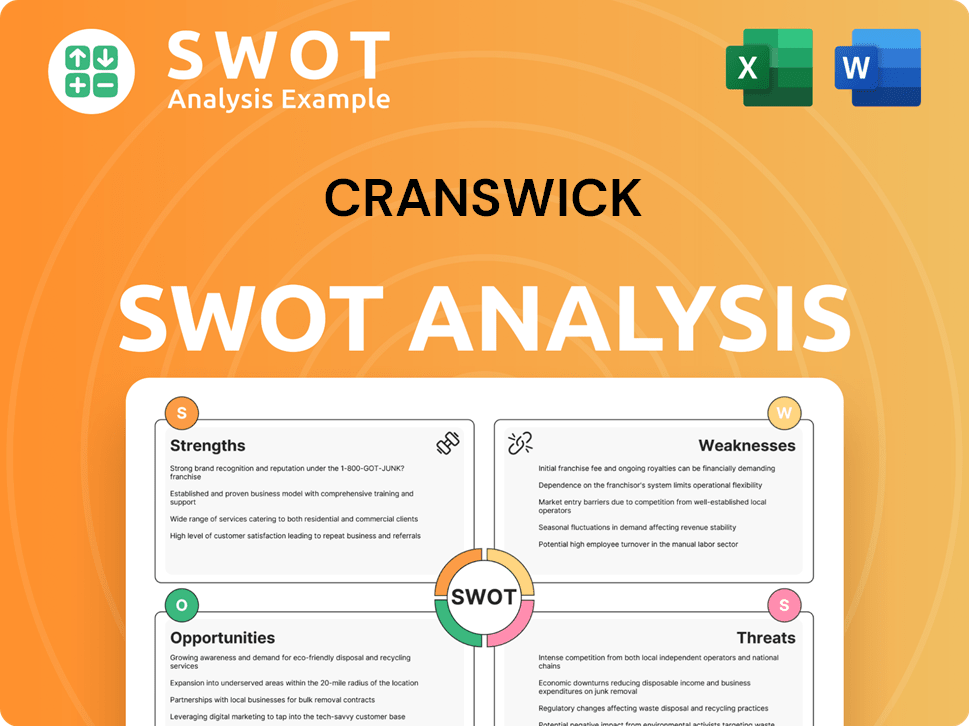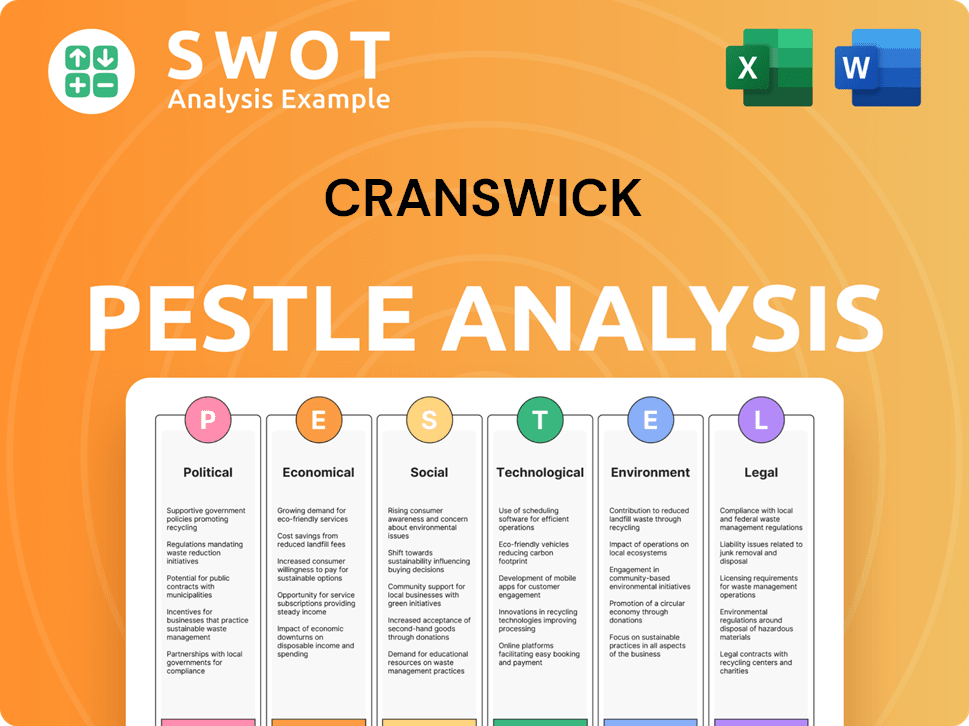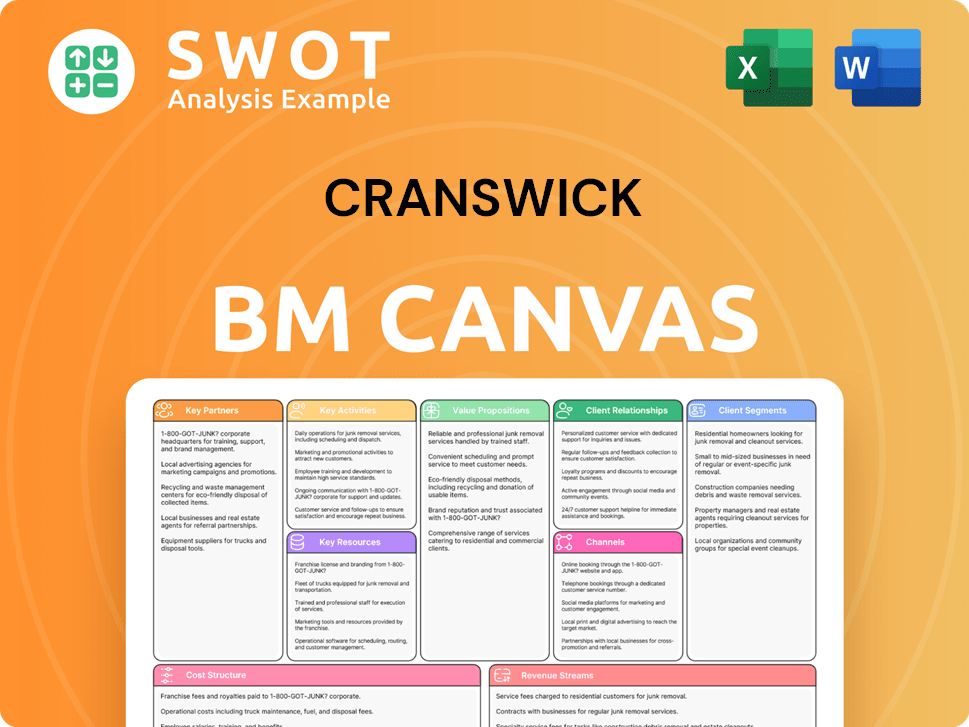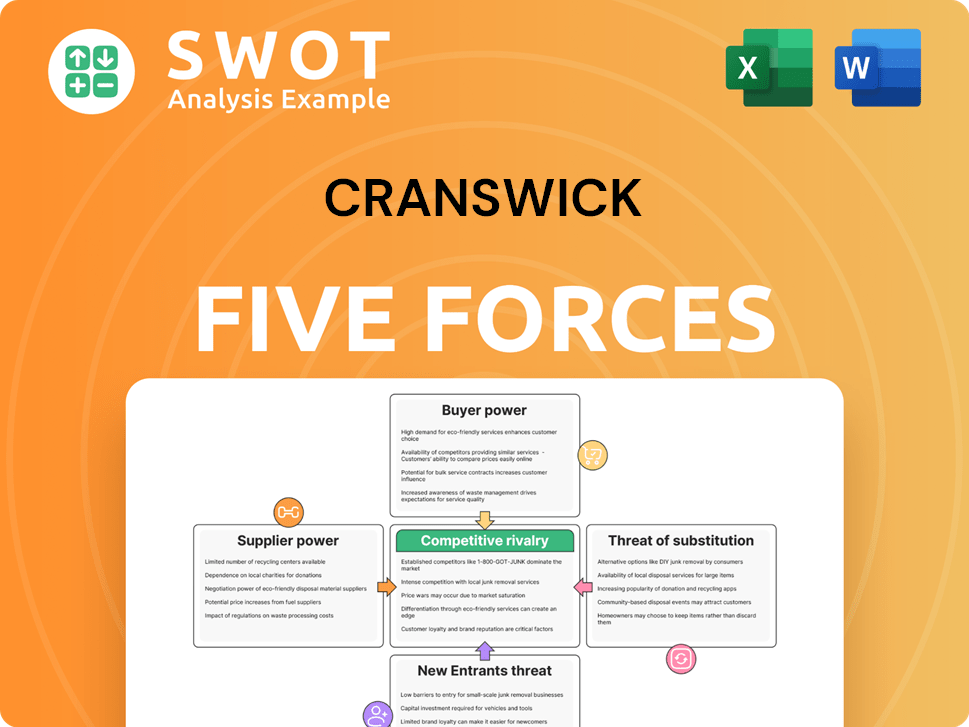Cranswick Bundle
How Did Cranswick Company Rise to Prominence?
Journey back to the 1970s and discover the origins of Cranswick plc, a leading British food producer. From its humble beginnings as a pig feed operation in Yorkshire, Cranswick's Cranswick SWOT Analysis reveals a fascinating transformation. Learn how this company evolved to become a major player in the UK food industry, shaping the landscape of meat products and beyond.

This brief overview of Cranswick Company explores its fascinating history, from its founding in 1972 as Cranswick Mill to its current status. Understanding Cranswick's early history and key milestones provides valuable insights into its strategic evolution. With a focus on pork processing and its impact on the UK food industry, explore how Cranswick plc became a national food production powerhouse.
What is the Cranswick Founding Story?
The Cranswick Company, a prominent British food producer, traces its roots back to 1972. It was founded by Jim Bloom, Mike Field, and a collective of twenty-one farmers in the East Riding of Yorkshire. This marked the beginning of what would become a significant player in the pork processing and meat products sector.
Originally named Cranswick Mill, the company's initial focus was on manufacturing pig feed. This was a strategic move designed to support local farms and optimize the supply chain. The founders, being farmers themselves, understood the industry's needs, setting the stage for Cranswick's future growth and influence within the UK food industry.
The early days of Cranswick saw a shift from solely feed production to include pig rearing and marketing by the late 1970s. This expansion solidified its 'farm-to-fork' approach. The company's formation as a collective of farmers likely involved a bootstrapping strategy, leveraging their existing agricultural resources. The collaborative spirit of the founding farmers was key to Cranswick's early success.
Cranswick's journey began with a collective of farmers in Yorkshire, aiming to improve the pig farming supply chain.
- Founded in 1972 as Cranswick Mill.
- Focused on pig feed production initially.
- Expanded to include pig rearing and marketing.
- Reflected a collaborative, farmer-led initiative.
Cranswick SWOT Analysis
- Complete SWOT Breakdown
- Fully Customizable
- Editable in Excel & Word
- Professional Formatting
- Investor-Ready Format

What Drove the Early Growth of Cranswick?
The early growth of the Cranswick Company involved a strategic pivot from its initial focus on pig feed to food production by the early 1980s. This shift marked a significant turning point in its trajectory, laying the groundwork for future expansion and diversification. The company's early ventures into poultry processing and subsequent acquisitions broadened its product range and market presence.
In 1974, Cranswick acquired Crown Chicken, which was an important step into poultry processing. This move was a key part of the company's diversification strategy, allowing it to supply fresh and processed poultry products. This expansion beyond its initial focus on pig feed was a crucial step in its growth.
Cranswick was first listed on the London Stock Exchange in 1985, which provided access to capital for further expansion. Throughout the 1980s and 1990s, the company expanded rapidly through acquisitions. These acquisitions were instrumental in broadening Cranswick's portfolio beyond primary pork and feed.
Notable acquisitions included Pioneer Foods in 1989, East Anglian Pig Company in 1995, and Yorkshire Bakeries in 1999. These acquisitions helped Cranswick diversify into cooked poultry, expanded pork processing, and pastry goods, respectively. These moves broadened the company's offerings, moving into value-added products like sausages and bacon.
The 2000s saw continued organic growth and further strategic acquisitions, including pig farming operations to enhance supply chain control. The acquisition of Benson Park in 2014 expanded its prepared foods business. By 2015, Cranswick had annual revenues of approximately £1 billion and operated from twelve state-of-the-art production facilities across the UK.
As of March 2025, Cranswick reported revenue of £2,723.3 million, a 4.8% increase from the previous year, with adjusted operating profit increasing by 11.8% to £206.9 million. The company's strategic decision to broaden its base beyond agribusiness into the food sector, driven by a philosophy of working with artisan producers, was well-received by the market, leading to consistent gains in turnover and strong profits.
Cranswick PESTLE Analysis
- Covers All 6 PESTLE Categories
- No Research Needed – Save Hours of Work
- Built by Experts, Trusted by Consultants
- Instant Download, Ready to Use
- 100% Editable, Fully Customizable

What are the key Milestones in Cranswick history?
The Cranswick Company has a rich Cranswick history, marked by strategic growth and adaptation within the UK food industry. From its early beginnings, the company has evolved significantly, consistently expanding its operations and product offerings to meet the changing demands of the market. This Cranswick plc has become a leading British food producer through a combination of organic growth and strategic acquisitions.
| Year | Milestone |
|---|---|
| Early Years | Founded with a focus on pork processing and meat products. |
| Ongoing | Continuous investment in facilities and technology, including a state-of-the-art facility in Suffolk opened in 2018. |
| 2022 | Re-entry into the pet products market with the acquisition of Cranswick Pet Products. |
| FY24 | Made record capital investments of £91 million. |
| FY25 | Made record capital investments of £138 million. |
One of the key innovations for Cranswick Company is its vertically integrated 'farm-to-fork' model, which ensures traceability and quality. This model extends to owning milling operations for feed production and investing in advanced farming systems like the 'NestBorn' on-farm hatching system for chickens.
The 'farm-to-fork' model ensures control over the entire production process, from farming to the final product.
Owning milling operations for feed production contributes to cost efficiency and quality control.
Investment in innovative farming systems like the 'NestBorn' on-farm hatching system for chickens enhances efficiency and animal welfare.
Securing long-term supply agreements with major retailers, such as the 10-year sole supply agreement with Sainsbury's, ensures market stability.
Despite its successes, Cranswick plc has faced challenges, including market fluctuations and scrutiny regarding animal welfare. The company has responded by emphasizing premium products, technical integrity, and improving animal welfare standards.
The food industry is susceptible to market downturns and competitive pressures, requiring strategic agility.
Addressing concerns about animal welfare is a continuous focus, with efforts to improve practices and ensure ethical standards.
A 100% British supply chain ensures traceability, enhancing product integrity and consumer trust.
Re-entering the pet products market allowed for the utilization of raw materials and expansion of integrated operations.
Cranswick Business Model Canvas
- Complete 9-Block Business Model Canvas
- Effortlessly Communicate Your Business Strategy
- Investor-Ready BMC Format
- 100% Editable and Customizable
- Clear and Structured Layout

What is the Timeline of Key Events for Cranswick?
The Cranswick Company's journey from its humble beginnings to a leading British food producer is marked by strategic acquisitions and a commitment to quality. Founded in 1972 by Jim Bloom, Mike Field, and other East Riding of Yorkshire farmers, the company initially focused on pig feed. Cranswick's expansion into food production, beginning with the acquisition of Crown Chicken in 1974, set the stage for its evolution into a major player in the meat products industry. The company's history reflects a consistent drive for growth and diversification, solidifying its position in the UK food market.
| Year | Key Event |
|---|---|
| 1972 | Cranswick Mill was founded by Jim Bloom, Mike Field, and other East Riding of Yorkshire farmers to produce pig feed. |
| 1974 | Acquired Crown Chicken, marking the company's entry into food production. |
| 1985 | Listed on the London Stock Exchange. |
| 1988 | Adopted a diversification strategy, acquiring a pork butchery. |
| 1989 | Acquired Pioneer Foods, adding cooked poultry products. |
| 1995 | Expanded pork processing with the acquisition of East Anglian Pig Company. |
| 1999 | Entered the pastry goods market by acquiring Yorkshire Bakerys. |
| 2013 | Moved back to breeding and rearing its own British pigs by acquiring East Anglian Pigs Limited and assets from Dent Ltd. |
| 2014 | Acquired Benson Park, a premium cooked poultry business. |
| 2016 | Acquired CCL Holdings Limited and Crown Chicken Limited, an integrated poultry producer, and Dunbia Ballymena, a Northern Irish pork processing business. |
| 2022 | Acquired Cranswick Pet Products, re-entering the pet food market. |
| 2024 (November) | Announced plans for a £20 million investment to boost fresh poultry processing capacity. |
| 2025 (March) | Celebrated its 50th anniversary and set new medium-term financial targets, including an adjusted operating margin target of around 7.5%. |
| 2025 (May) | Reported strong financial results for the 52 weeks ended March 29, 2025, with revenue up 6.8% to £2,723.3 million and adjusted profit before tax up 14.3% to £197.9 million. |
Cranswick's future strategy emphasizes consolidating existing market positions, expanding into adjacent categories, and diversifying into new protein sectors. The company aims to increase its international sales by 20% by 2025, focusing on Asian and North American markets. This expansion is supported by ongoing investments in automation and new facilities.
The company is committed to innovation, including developing healthier food options and plant-based products. Cranswick plans to increase its range of plant-based offerings by 30% in 2024. Sustainability is also a key focus, reflecting a commitment to sustainably produced food.
Analysts predict Cranswick's revenue to grow by 5.7% annually over the next three years, with profit margins increasing from 4.9% to 5.3%. The company's strong financial results for the 52 weeks ended March 29, 2025, with revenue up 6.8% to £2,723.3 million, demonstrate its robust performance.
Cranswick is investing significantly in its infrastructure to drive operational efficiencies and improve margins. Ongoing investments include £97 million in the Hull Fresh Pork site, £49 million across fresh and added-value poultry, and £25 million in expanding houmous and dips capacity. This commitment supports the company's long-term growth strategy.
Cranswick Porter's Five Forces Analysis
- Covers All 5 Competitive Forces in Detail
- Structured for Consultants, Students, and Founders
- 100% Editable in Microsoft Word & Excel
- Instant Digital Download – Use Immediately
- Compatible with Mac & PC – Fully Unlocked

Related Blogs
- What is Competitive Landscape of Cranswick Company?
- What is Growth Strategy and Future Prospects of Cranswick Company?
- How Does Cranswick Company Work?
- What is Sales and Marketing Strategy of Cranswick Company?
- What is Brief History of Cranswick Company?
- Who Owns Cranswick Company?
- What is Customer Demographics and Target Market of Cranswick Company?
Disclaimer
All information, articles, and product details provided on this website are for general informational and educational purposes only. We do not claim any ownership over, nor do we intend to infringe upon, any trademarks, copyrights, logos, brand names, or other intellectual property mentioned or depicted on this site. Such intellectual property remains the property of its respective owners, and any references here are made solely for identification or informational purposes, without implying any affiliation, endorsement, or partnership.
We make no representations or warranties, express or implied, regarding the accuracy, completeness, or suitability of any content or products presented. Nothing on this website should be construed as legal, tax, investment, financial, medical, or other professional advice. In addition, no part of this site—including articles or product references—constitutes a solicitation, recommendation, endorsement, advertisement, or offer to buy or sell any securities, franchises, or other financial instruments, particularly in jurisdictions where such activity would be unlawful.
All content is of a general nature and may not address the specific circumstances of any individual or entity. It is not a substitute for professional advice or services. Any actions you take based on the information provided here are strictly at your own risk. You accept full responsibility for any decisions or outcomes arising from your use of this website and agree to release us from any liability in connection with your use of, or reliance upon, the content or products found herein.